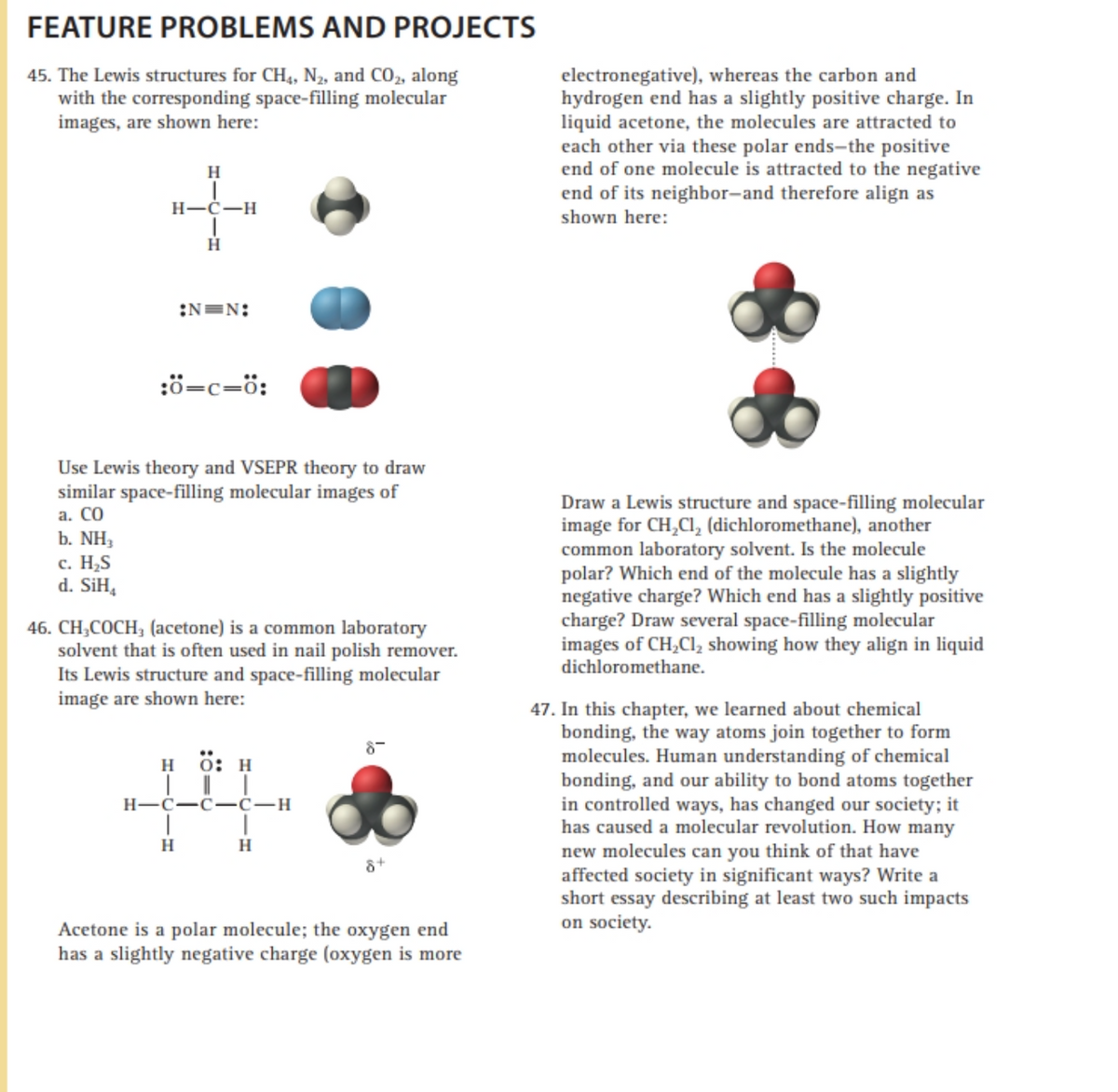FEATURE PROBLEMS AND PROJECTS electronegative), whereas the carbon and hydrogen end has a slightly positive charge. In liquid acetone, the molecules are attracted to each other via these polar ends-the positive end of one molecule is attracted to the negative end of its neighbor-and therefore align as 45. The Lewis structures for CH,, N2, and CO, along with the corresponding space-filling molecular images, are shown here: H H-C-H shown here: H :N=N: :ö=c=ö: Use Lewis theory and VSEPR theory to draw similar space-filling molecular images of а. СО Draw a Lewis structure and space-filling molecular image for CH,CI, (dichloromethane), another common laboratory solvent. Is the molecule polar? Which end of the molecule has a slightly negative charge? Which end has a slightly positive charge? Draw several space-filling molecular images of CH,Cl, showing how they align in liquid dichloromethane. b. NH, c. H,S d. SiH, 46. CH,COCH; (acetone) is a common laboratory solvent that is often used in nail polish remover. Its Lewis structure and space-filling molecular image are shown here: 47. In this chapter, we learned about chemical bonding, the way atoms join together to form molecules. Human understanding of chemical bonding, and our ability to bond atoms together in controlled ways, has changed our society; it has caused a molecular revolution. How many new molecules can you think of that have affected society in significant ways? Write a short essay describing at least two such impacts on society. н 0: н H-C-C -C-H H Acetone is a polar molecule; the oxygen end has a slightly negative charge (oxygen is more
Electronic Effects
The effect of electrons that are located in the chemical bonds within the atoms of the molecule is termed an electronic effect. The electronic effect is also explained as the effect through which the reactivity of the compound in one portion is controlled by the electron repulsion or attraction producing in another portion of the molecule.
Drawing Resonance Forms
In organic chemistry, resonance may be a mental exercise that illustrates the delocalization of electrons inside molecules within the valence bond theory of octet bonding. It entails creating several Lewis structures that, when combined, reflect the molecule's entire electronic structure. One Lewis diagram cannot explain the bonding (lone pair, double bond, octet) elaborately. A hybrid describes a combination of possible resonance structures that represents the entire delocalization of electrons within the molecule.
Using Molecular Structure To Predict Equilibrium
Equilibrium does not always imply an equal presence of reactants and products. This signifies that the reaction reaches a point when reactant and product quantities remain constant as the rate of forward and backward reaction is the same. Molecular structures of various compounds can help in predicting equilibrium.
I need help on my homework with number 46. See attached

Trending now
This is a popular solution!
Step by step
Solved in 3 steps with 3 images




